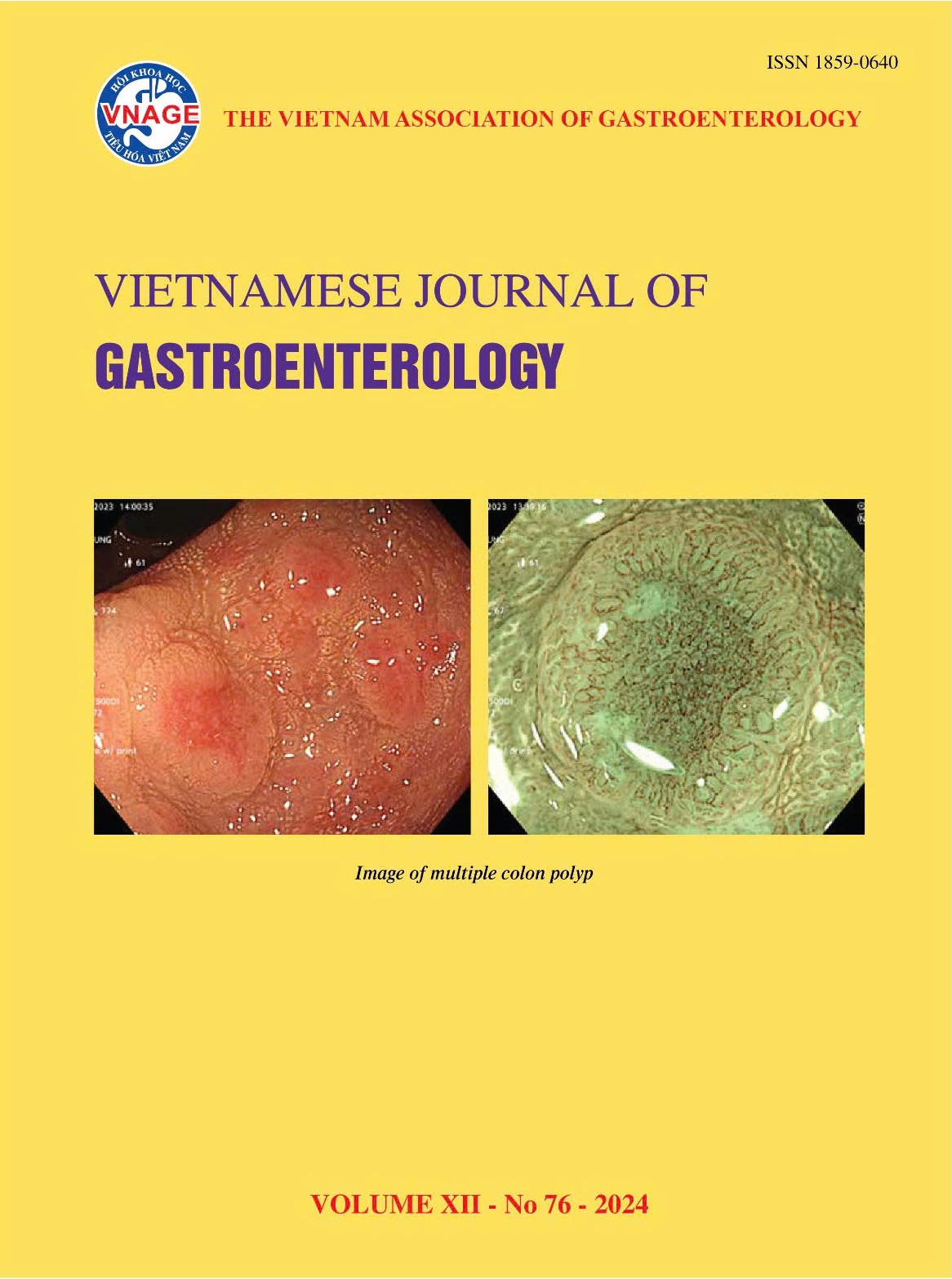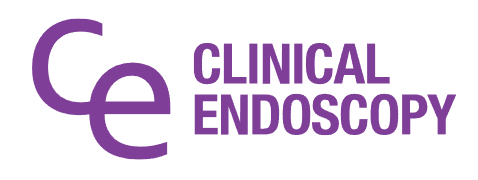Short-term outcomes of Forrest IIB peptic ulcer bleeding treated with high-dose intravenous nexium following endoscopic intervention and associated factors
DOI:
https://doi.org/10.63583/77escc91Từ khóa:
Peptic ulcer, Forrest IIB, endoscopic interventionTóm tắt
Objective: To describe the short-term outcomes of Forrest IIB peptic ulcer bleeding treated with high-dose intravenous Nexium following endoscopic intervention, and to assess associated factors. Subjects and method: A prospective cross-sectional study was conducted on 52 patients with Forrest IIB peptic ulcer bleeding treated with high-dose intravenous Nexium following endoscopic intervention between January 2020 and December 2024. Result: This prospective descriptive study included 52 patients with upper gastrointestinal bleeding due to Forrest IIB peptic ulcers, aiming to evaluate clinical characteristics and treatment outcomes. The mean age was 59.6 ± 17.1 years, with a male-to-female ratio of 2.25. A history of NSAID/corticosteroid use was reported in 46.2% of patients. The most common symptoms were hematemesis/melena (76.9%) and epigastric pain (69.2%). The initial hemostasis rate was 96.2%, rebleeding within 7 days occurred in 3.8%, and no 30-day mortality was observed. Univariate regression analysis identified a history of NSAID/corticosteroid use and a Blatchford score ≥10 as risk factors for treatment failure. Conclusion: Forrest IIB ulcer bleeding remains at risk of rebleeding after endoscopic therapy. A history of NSAID/corticosteroid use and a high Blatchford score are predictors of treatment failure.
Tài liệu tham khảo
1. Jensen D.M., Eklund S., Persson T. et al. (2017). Reassessment of Rebleeding Risk of Forrest IB (Oozing) Peptic Ulcer Bleeding in a Large International Randomized Trial. American Journal of Gastroenterology, 112(3), 441-446.
2. Forrest JohnA.H., Finlayson N.D.C., Shearman D.J.C. (1974). Endoscopy in gastrointestinal bleeding. The Lancet, 304(7877), 394-397.
3. Laine L., Jensen D.M. (2012). Management of Patients With Ulcer Bleeding. Official journal of the American College of Gastroenterology | ACG, 107(3), 345.
4. ACG Guidelines ACG. American College of Gastroenterology, <https://gi.org/guidelines/>, accessed: 17/04/2025.
5. Sung J.J.Y., Barkun A., Kuipers E.J. (2009). Intravenous Esomeprazole for Prevention of Recurrent Peptic Ulcer Bleeding. Ann Intern Med, 150(7), 455-464.
6. Laursen, S.B. (2016). Risk Factors for Rebleeding in Peptic Ulcer Bleeding: A Second Look at Second-Look Endoscopy. Dig Dis Sci 61, 332-333. https://doi.org/10.1007/s10620-015-3919-y.
7. Barkun A.N., Bardou M., Kuipers E.J. et ak (2010). International consensus recommendations on the management of patients with nonvariceal upper gastrointestinal bleeding. Ann Intern Med, 152(2), 101-113.
8. Blatchford O., Murray W.R., Blatchford M. (2000). A risk score to predict need for treatment for upper-gastrointestinal haemorrhage. Lancet, 356(9238), 1318-1321.
9. Holster I.L., Kuipers E.J. (2011). Update on the Endoscopic Management of Peptic Ulcer Bleeding. Curr Gastroenterol Rep, 13(6), 525-531.









